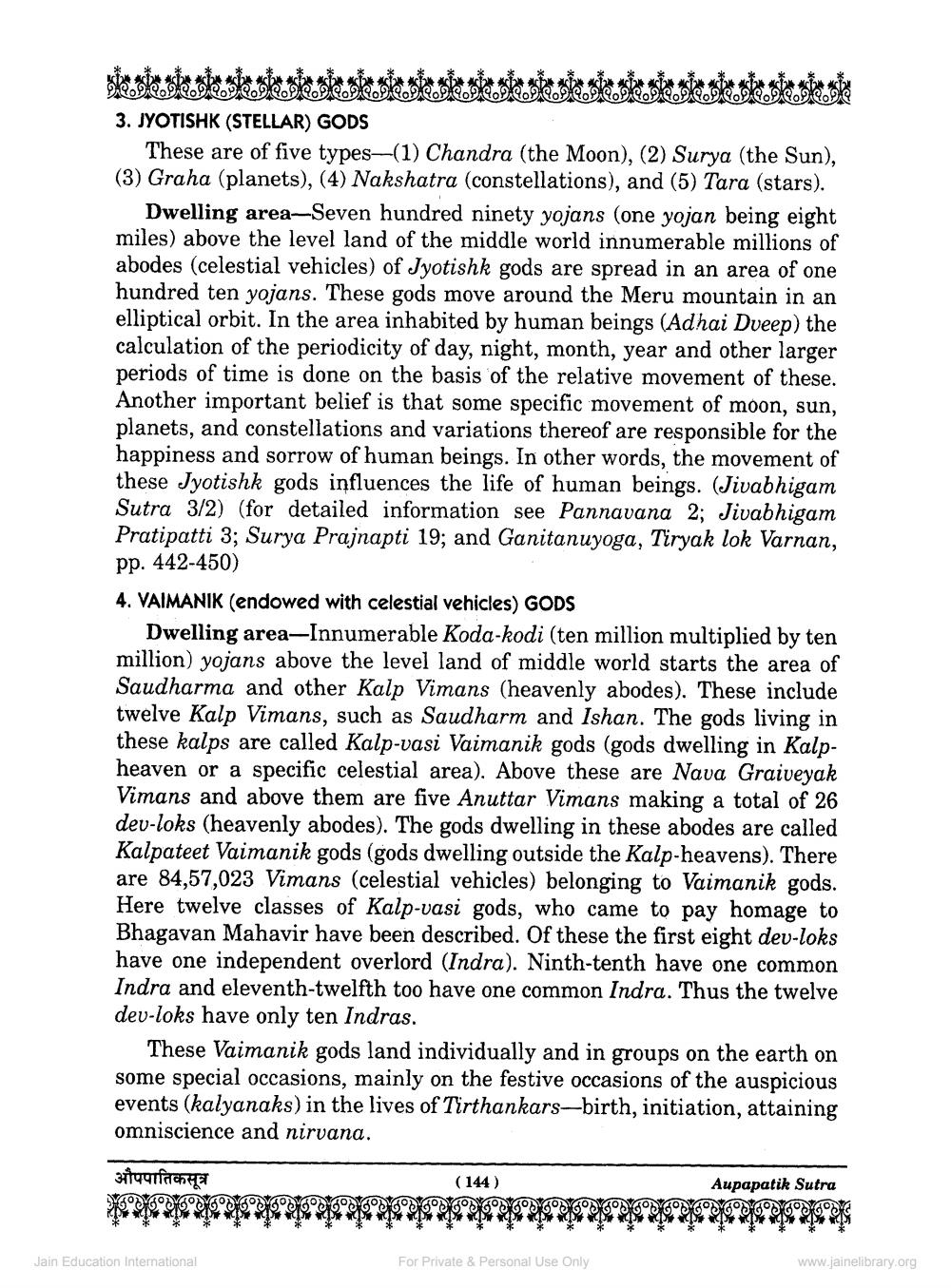________________
este ste
3. JYOTISHK (STELLAR) GODS
These are of five types-(1) Chandra (the Moon), (2) Surya (the Sun), (3) Graha (planets), (4) Nakshatra (constellations), and (5) Tara (stars).
Dwelling area-Seven hundred ninety yojans (one yojan being eight miles) above the level land of the middle world innumerable millions of abodes (celestial vehicles) of Jyotishk gods are spread in an area of one hundred ten yojans. These gods move around the Meru mountain in an elliptical orbit. In the area inhabited by human beings (Adhai Dveep) the calculation of the periodicity of day, night, month, year and other larger periods of time is done on the basis of the relative movement of these. Another important belief is that some specific movement of moon, sun, planets, and constellations and variations thereof are responsible for the happiness and sorrow of human beings. In other words, the movement of these Jyotishk gods influences the life of human beings. (Jivabhigam Sutra 3/2) (for detailed information see Pannavana 2; Jivabhigam Pratipatti 3; Surya Prajnapti 19; and Ganitanuyoga, Tiryak lok Varnan, pp. 442-450)
4. VAIMANIK (endowed with celestial vehicles) GODS
Dwelling area-Innumerable Koda-kodi (ten million multiplied by ten million) yojans above the level land of middle world starts the area of Saudharma and other Kalp Vimans (heavenly abodes). These include twelve Kalp Vimans, such as Saudharm and Ishan. The gods living in these kalps are called Kalp-vasi Vaimanik gods (gods dwelling in Kalpheaven or a specific celestial area). Above these are Nava Graiveyak Vimans and above them are five Anuttar Vimans making a total of 26 dev-loks (heavenly abodes). The gods dwelling in these abodes are called Kalpateet Vaimanik gods (gods dwelling outside the Kalp-heavens). There are 84,57,023 Vimans (celestial vehicles) belonging to Vaimanik gods. Here twelve classes of Kalp-vasi gods, who came to pay homage to Bhagavan Mahavir have been described. Of these the first eight dev-loks have one independent overlord (Indra). Ninth-tenth have one common Indra and eleventh-twelfth too have one common Indra. Thus the twelve dev-loks have only ten Indras.
These Vaimanik gods land individually and in groups on the earth on some special occasions, mainly on the festive occasions of the auspicious events (kalyanaks) in the lives of Tirthankars-birth, initiation, attaining omniscience and nirvana.
औपपातिकसूत्र
Jain Education International
(144)
For Private & Personal Use Only
Aupapatik Sutra
www.jainelibrary.org




